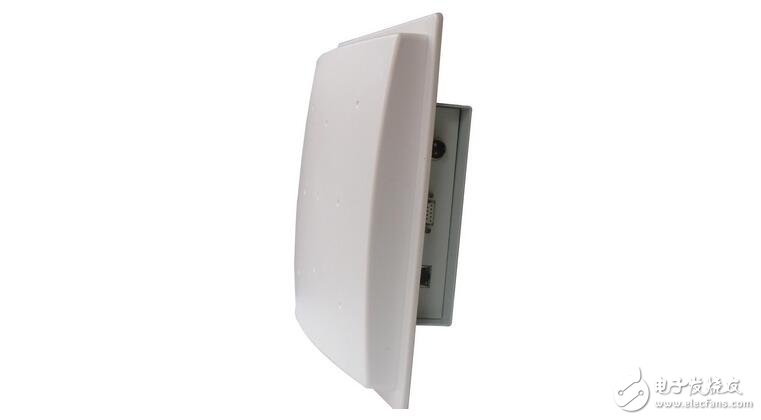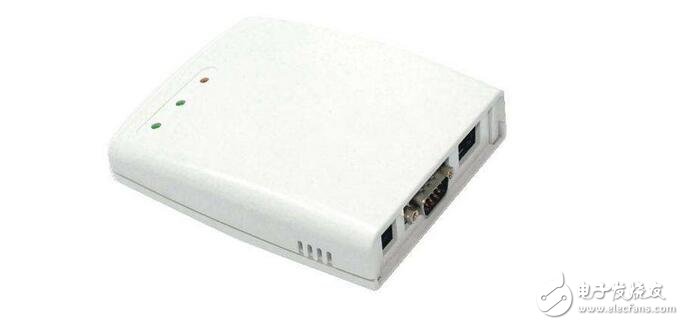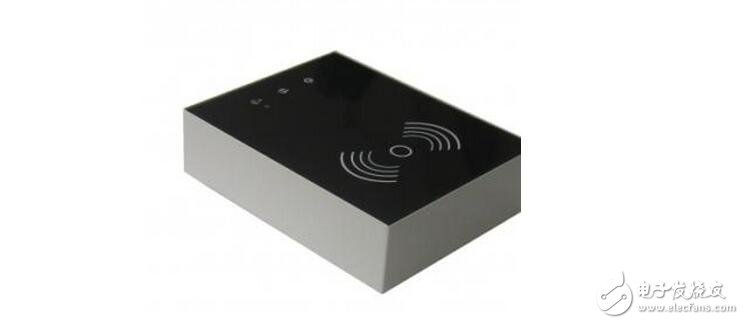RFID reader (abbreviation of Radio Frequency IdenTIficaTIon), also known as "RFID reader", is radio frequency identification. It automatically recognizes the target object and acquires relevant data through radio frequency identification signal. It can recognize high-speed moving objects without simultaneous intervention. Identifying multiple RFID tags is quick and easy. RFID readers are available in fixed and handheld applications. Handheld RFID readers include low frequency, high frequency, ultra high frequency, active and so on. RFID technology is currently used in many industries, such as logistics, anti-counterfeiting, industrial manufacturing, ETC, etc. Especially after the concept of Industry 4.0 was put forward, RFID readers have been widely used in the manufacturing industry.

RFID readers are increasingly used in manufacturing, with electronic tags in production, transportation, and warehouse management. In the production process, instead of the bar code brush gun, automatic data collection is realized; the material pulling link is coordinated with the AGV car transport; the warehouse link manages the goods in and out, inventory, and the like. In the electronic toll collection system ETC (Electronic Toll CollecTIon), the reader is defined as an RSU (Road Side Unit), that is, a roadside unit, and an on-board unit OBU (On Board Unit). RFID reading and writing is applied to the management of the vehicle yard to realize the identification of the vehicle identity and automatically deduct the fee. If you use a long-range RFID reader, you can achieve a fast channel that does not stop, free of cards, or unattended channels.

The reader is a radio frequency tag reading and writing device and is one of the two important components (tags and readers) of the RFID system. RF tag reading and writing devices also have some other popular names according to the specific implementation functions, such as: Reader, Interrogator, Communicator, Scanner, Reader and Writer. ), a programmer, a reading device, a portable reader, an AEI device (AutomaTIc Equipment Identification Device), or the like. Generally, RF tag reading and writing devices should be designed according to the read and write requirements of RF tags and application requirements. With the development of radio frequency identification technology, RF tag reading and writing devices have also formed some typical system implementation modes. The focus of this chapter is also to introduce the implementation principle of this reader. From the most basic principle, RF tag reading and writing devices generally follow the basic mode as shown.
What is an RFID reader:
Radio Frequency Identification (RFID) is a non-contact automatic identification technology. Its basic principle is to use the transmission characteristics of radio frequency signals and spatial coupling (inductive or electromagnetic coupling) or radar reflection to achieve the opposite. Identify automatic recognition of objects. The RFID reader/writer (RFID reader) wirelessly communicates with the RFID electronic tag through the antenna, so that the tag identification code and the memory data can be read or written. A typical RFID reader includes an RFID radio module (transmitter and receiver), a control unit, and a reader antenna. In radio frequency identification systems, electronic tags are also called radio frequency tags, transponders, and data carriers; readers are also called readout devices, scanners, communicators, and readers (depending on whether the electronic tag can wirelessly rewrite data). The space (contactless) coupling of the RF signal is realized between the electronic tag and the reader through the coupling element, and the transmission and data exchange are realized according to the timing relationship in the coupling channel.

RFID reader works:
Radio Frequency Identification (RFID) is a non-contact automatic identification technology. Its basic principle is to use the transmission characteristics of radio frequency signals and spatial coupling (inductive or electromagnetic coupling) or radar reflection to achieve the opposite. Identify automatic recognition of objects.
The rfid reader wirelessly communicates with the RFID electronic tag through the antenna, so that the tag identification code and the memory data can be read or written. A typical RFID reader includes an RFID radio module (transmitter and receiver), a control unit, and a reader antenna.
In radio frequency identification systems, electronic tags are also called radio frequency tags, transponders, and data carriers; readers are also called readout devices, scanners, communicators, and readers (depending on whether the electronic tag can wirelessly rewrite data). The space (contactless) coupling of the RF signal is realized between the electronic tag and the reader through the coupling element, and the transmission and data exchange are realized according to the timing relationship in the coupling channel.
The rfid reader wirelessly communicates with the RFID electronic tag through the antenna, so that the tag identification code and the memory data can be read or written. A typical reader includes a high frequency module (transmitter and receiver), a control unit, and a reader antenna.
Among them, electronic tags are also called radio frequency tags, transponders, and data carriers; readers are also called readout devices, scanners, communicators, and readers (depending on whether the electronic tag can wirelessly rewrite data). The space (contactless) coupling of the RF signal is realized between the electronic tag and the reader through the coupling component, and in the coupling channel, energy transfer and data exchange are realized according to the timing relationship.
There are two types of coupling of RF signals that occur between the reader and the electronic tag.
(1) Inductive coupling. The transformer model is coupled by a spatial high-frequency alternating magnetic field, based on the law of electromagnetic induction.
(2) Electromagnetic backscatter coupling: The radar principle model, the electromagnetic wave emitted, hits the target and reflects, and carries back the target information, based on the spatial propagation law of the electromagnetic wave.

Advantage:
First of all, it is necessary to pay attention to the frequency range of the reader device to see if it meets the frequency specification of the project place of use;
Second, understand whether the maximum transmit power of the reader and the matching antenna are over-standard;
Third, look at the number of antenna ports that the reader has, depending on whether the application requires a multi-interface reader/writer;
Fourth, whether the communication interface meets the needs of the project;
Fifth, the interpretation distance and anti-collision indicators, the reading distance indicator should be clear what antenna and label test; anti-collision should be clear what label in what arrangement, how long after reading all;
Sixth, an RFID application system is related to the reader, but also related to the label, the antenna, the material of the labelled item, the moving speed of the labelled item, the surrounding environment, etc., and it is better to simulate the scene before determining the equipment. Testing and verification to ensure that the product really meets the application needs;
Seventh, the stability of the continuous test equipment under the simulation condition ensures stable operation for a long time.
Eighth, look at whether the development materials meet the system development needs, it is best to support the system you use, preferably with related routines, if not supported, the development time will be very long, and even the development will not continue.
SHAOXING COLORBEE PLASTIC CO.,LTD , https://www.colorbeephoto.com